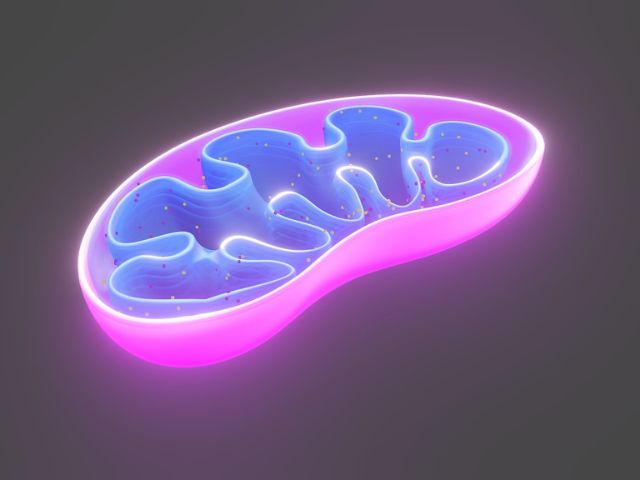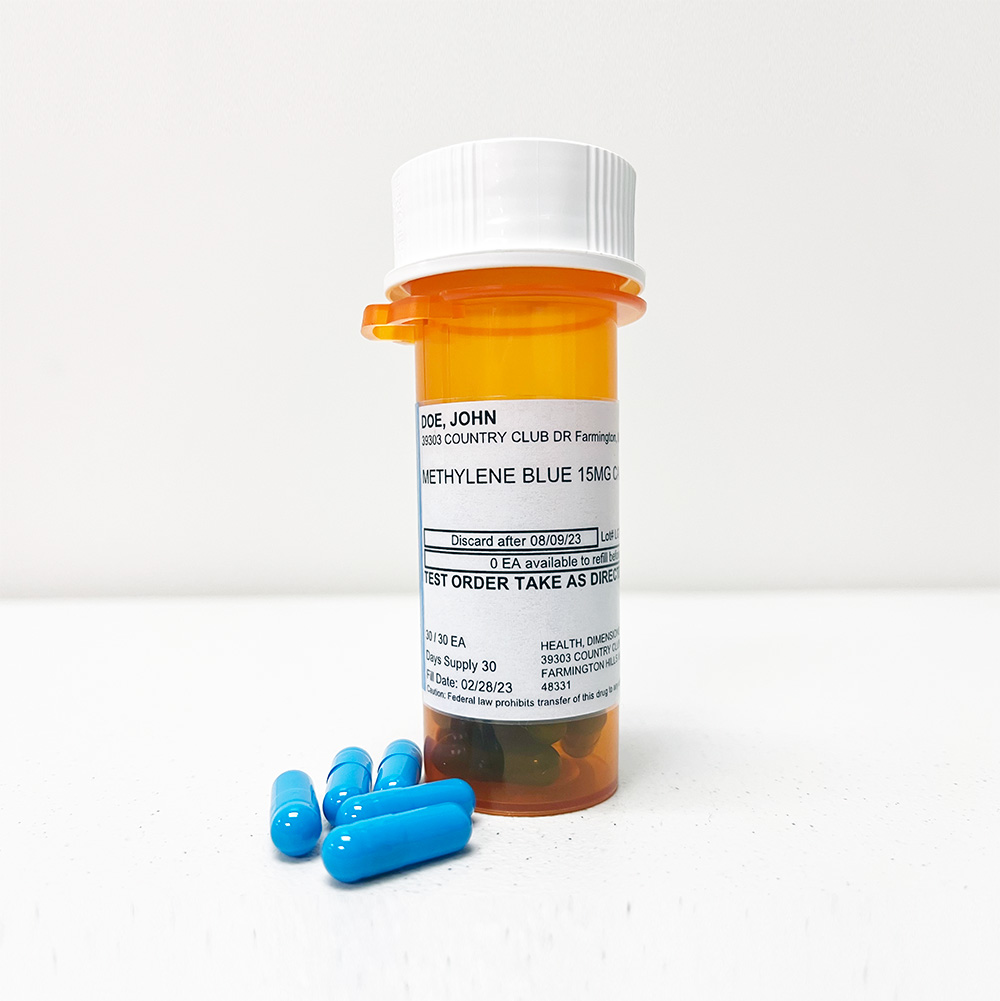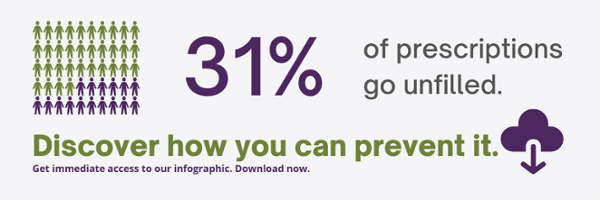What is methylene blue, and why is it considered a promising new drug despite being over a century old?
Exploring how methylene blue may be linked to mitochondrial functioning and overall health.
What is Methylene Blue?
Methylene blue, also known as methylthioninium chloride, is a bioactive substance. A bioactive substance is defined by The National Cancer Institute as “a type of chemical found in small amounts in plants and certain foods (such as fruits, vegetables, nuts, oils, and whole grains). Bioactive compounds have actions in the body that may promote good health. For over 120 years, researchers have found methylene blue to be unparalleled in terms of bioactive versatility. It is continuously being studied in the prevention of cancer, heart disease, and other diseases. Methylene blue’s diverse range of use and minimal side effects are further driving interest in the substance.
Mitochondrial Function
One of the diverse areas in which methylene blue may be very beneficial is that of mitochondrial function. Mitochondria exist within the cells in your body and produce the energy that your cells rely on to function properly. This energy is created as mitochondria consume oxygen.
Because they produce the energy that cells rely on, mitochondria are vital for normal cellular function.

Mitochondrial dysfunction occurs when the number of mitochondria in certain cells is reduced, resulting in less energy to fuel those cells. When cells do not receive the energy necessary to function properly, the organs made up of these cells lose functionality as well.
Research has shown that methylene blue can “reroute electrons in the mitochondrial electron transfer chain directly from NADH to cytochrome c, increasing the activity of complex IV and effectively promoting mitochondrial activity while mitigating oxidative stress.” In other words, methylene blue has demonstrated remarkable properties that help limit cell damage and enhance the metabolic abilities within the mitochondria of cells.
Methylene blue’s excellent mitochondrial response has therefore led to advancements in discovering possible uses for the substance in addressing conditions that are related to mitochondrial dysfunction. Mitochondrial dysfunction has been observed in systematic aging that affects many different tissues, including the brain and skin.
Brain Health
Studies show that mitochondrial dysfunction is associated with neuronal loss. This is true for most brain diseases such as Alzheimer’s disease and Parkinson’s disease, as well as other types of brain injuries. Research on methylene blue has demonstrated the substance’s success as a memory-enhancing and neuroprotective agent. For example, it is a great electron donor which may help with increasing the expression of brain cytochrome oxidase. Defects in the mitochondrial cytochrome oxidase have been associated with brain/cognition issues.
Furthermore, clinical trials observing the effect of methylene blue on one’s overall cognitive function also show that even in lower doses, it promotes increased MR imaging activity within sustained attention. This is enough to aid in short-term memory tasks and potential memory retrieval.
Anti-Aging & Wound Healing
Wrinkles, pigmentation, and weakened wound healing ability are associated with oxidative stress. As mentioned earlier, methylene blue enhances mitochondrial activity while mitigating oxidative stress. Recent studies support applications of methylene blue in addressing age-related conditions, including skin aging, and a premature aging disease known as progeria.
Methylene blue may also stimulate fibroblast proliferation which supports wound healing. Researchers have stated that “It can also act as a broad-spectrum UV chemical blocker and render three levels of protection to human skin — from blocking UV irradiation to mitigating cellular oxidative damage and stimulating skin proliferation”.
Who Shouldn’t Use Methylene Blue
Just like any other medication, there are also certain risks when it comes to administering methylene blue, especially in higher dosages. For instance, the FDA warns about possible serotonin syndrome when it is taken with other medications that raise one’s serotonin levels.
Methylene blue is also not advisable for those with glucose-6-phosphate dehydrogenase (G6PD) deficiency as it could lead to severe red blood cell breakdown and anemia. It can also be harmful to developing babies, so pregnant women should avoid taking methylene blue.
Compounded Methylene Blue with HDRx
The best and safest way to maximize the potential of methylene blue is through compounded medications that are specially formulated by pharmacists to meet specific patient needs.
Healing Dose Compounding Pharmacy Rx adjusts methylene blue dosage, strength, and form as prescribed by a licensed prescriber. Methylene blue capsules are most commonly prescribed, but our pharmacists can produce the medication in many forms.
The average starting dose of methylene blue is 8–16 mg per day.
Prescription required.
Ask your doctor about a prescription for methylene blue and fill your prescription with our Methylene Blue experts.



